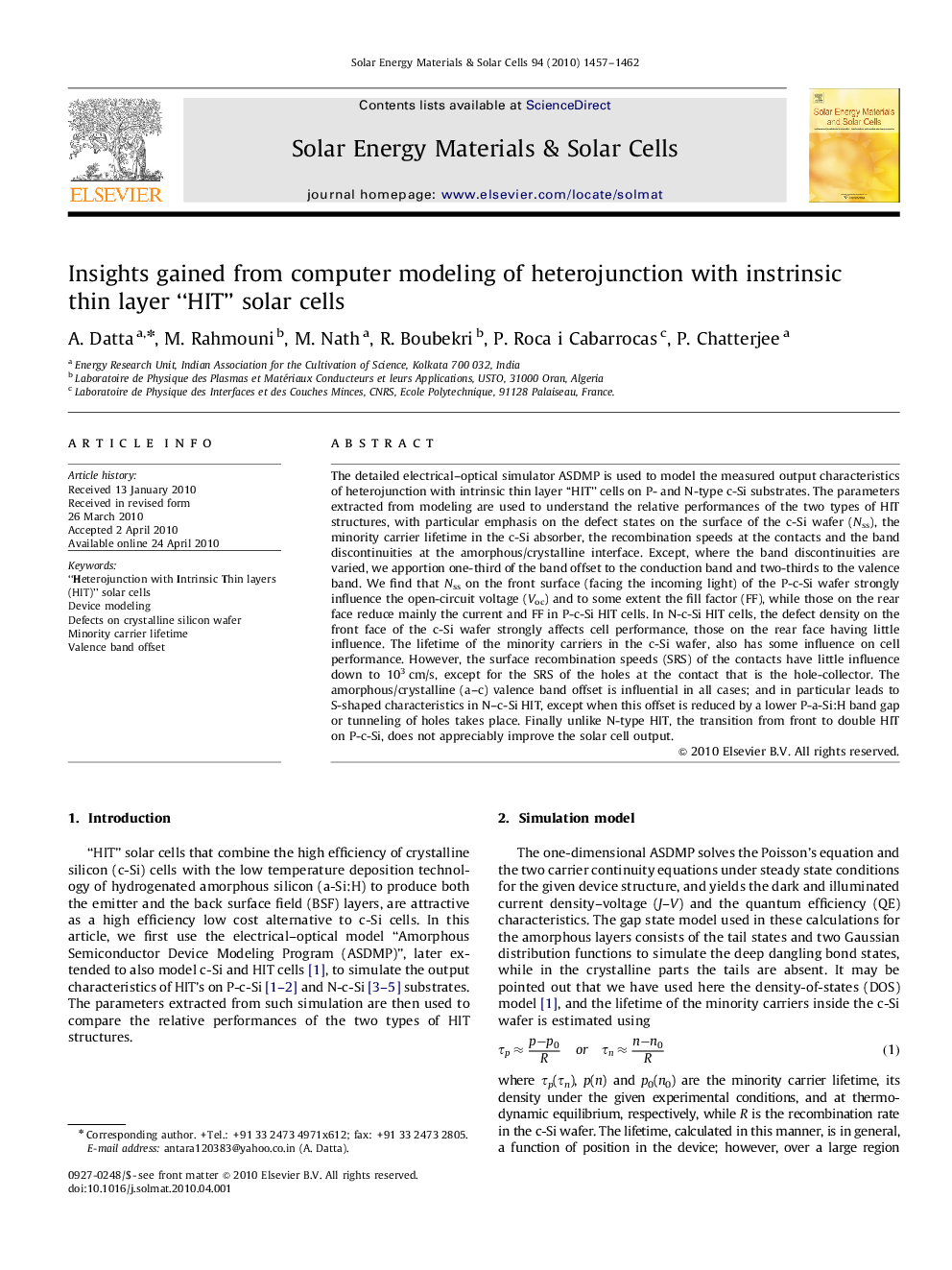| کد مقاله | کد نشریه | سال انتشار | مقاله انگلیسی | نسخه تمام متن |
|---|---|---|---|---|
| 79323 | 49352 | 2010 | 6 صفحه PDF | دانلود رایگان |

The detailed electrical–optical simulator ASDMP is used to model the measured output characteristics of heterojunction with intrinsic thin layer “HIT” cells on P- and N-type c-Si substrates. The parameters extracted from modeling are used to understand the relative performances of the two types of HIT structures, with particular emphasis on the defect states on the surface of the c-Si wafer (Nss), the minority carrier lifetime in the c-Si absorber, the recombination speeds at the contacts and the band discontinuities at the amorphous/crystalline interface. Except, where the band discontinuities are varied, we apportion one-third of the band offset to the conduction band and two-thirds to the valence band. We find that Nss on the front surface (facing the incoming light) of the P-c-Si wafer strongly influence the open-circuit voltage (Voc) and to some extent the fill factor (FF), while those on the rear face reduce mainly the current and FF in P-c-Si HIT cells. In N-c-Si HIT cells, the defect density on the front face of the c-Si wafer strongly affects cell performance, those on the rear face having little influence. The lifetime of the minority carriers in the c-Si wafer, also has some influence on cell performance. However, the surface recombination speeds (SRS) of the contacts have little influence down to 103 cm/s, except for the SRS of the holes at the contact that is the hole-collector. The amorphous/crystalline (a–c) valence band offset is influential in all cases; and in particular leads to S-shaped characteristics in N–c-Si HIT, except when this offset is reduced by a lower P-a-Si:H band gap or tunneling of holes takes place. Finally unlike N-type HIT, the transition from front to double HIT on P-c-Si, does not appreciably improve the solar cell output.
Journal: Solar Energy Materials and Solar Cells - Volume 94, Issue 9, September 2010, Pages 1457–1462